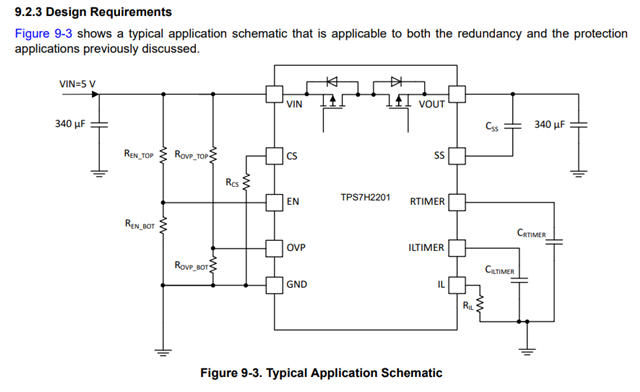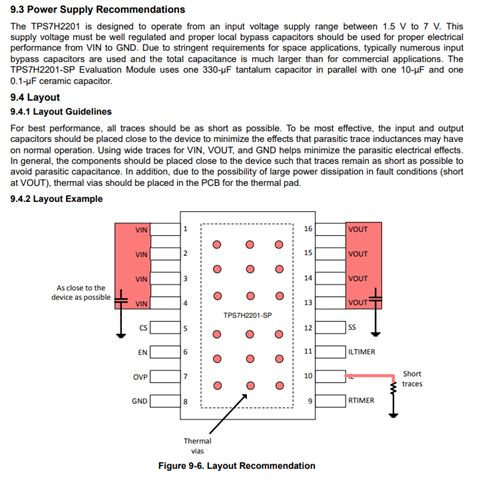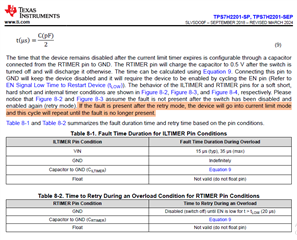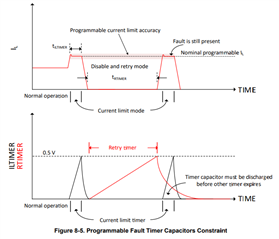Tool/software:
Hi,
We ordered TPS7H2201HKR/EM and its QMLV part from TI. I have encountered some problems during tests of EM part. I need a solution for those unexpected results.
Firstly, I tried to use the proposed design given in the datasheet and made necessary calculations in order to choose the resistor and capacitor values.
My preferred values are given below:
Ren_top: 100K, Ren_bot: 16K6,
Rovp_top: 100K, Rovp_bot: 12K95,
Rcs: 41K5
Css: 150nF
Crtimer: 220nF
Ciltimer: 2n2F
Ril: 6K81
There is no input and output capacitors.
When I tried to simulate the proposed design circuit by using the pspice simulation model, I could see all expected results according to the load change.
For example, the power switch is in current limit operation with a specified timer and turned off, then its retry mode is activated and those operations works continuously during a heavy load condition.
When I built the same circuit on a PCB, I could not see the expected results. During the heavy load or short circuit condition, the power switch is in current limit operation and its retry mode is activated in only one time.
Then, the power switch is turned off and it is not turned on during a light load. It can only be turned on with grounding to the EN pin of the IC.
Then, I tried many configurations given below to test the IC.
- I added 220uF input and output capacitors, no change occurred,
- I only adjusted the retry timer with 10uF capacitor, no change occurred,
- I only adjusted the current limit timer with 220nF capacitor, no change occurred,
- I decreased the current limit with 33K resistor, no change occurred,
How can this problem be happened and what should we do to solve it?






